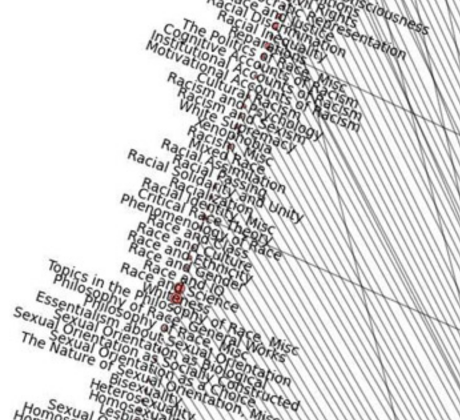A Taxonomic Map of Philosophy by Justin W..
From the post:
Some people go to PhilPapers, get the information they need, and then just go. Not Valentin Lageard, a graduate student in philosophy at Université Paris-Sorbonne. The Categories page at the site caught his eye. He says:
The completeness of their taxonomy was striking and I thought : “Could it be possible to map this taxonomy ?”. I decided it was a nice idea and i started to work on it.
The first step was to select the kind of graph and since their taxonomy includes a hierarchy permitting to sub-categories to be children of more than one parent categories, I selected a concentric circles graph.
Because I’m a python user, I choosed Networkx for the graph part and BeautifulSoup for the scraping part. Furthermore, since Philpapers gives the articles number for each category, I decided to add this data to my graph.
After some configurations of the display, I finally reached my goal: a map of the taxonomy of philosophy. And it was quite beautiful.
Agreed.
[See update, below, for the more detailed 5-layer version]
…
NEW UPDATE: Here is the 5-layer version. You can view it in more detail here (open it in a new tab or window for best results).…
Impressive but is it informative?
In order to read the edge, I had to magnify the graph several times its original size, which then meant navigation was problematic.
Despite the beauty of the image, a graph file that enables filtering of nodes and edges would be far more useful for exploring the categories as well as the articles therein.
For example:
If you are wondering what falls under “whiteness,” apparently studies of “whiteness” in the racial sense but also authors whose surnames are “White.”
As the top of the categories page for whiteness advises:
This category needs an editor. We encourage you to help if you are qualified.
Caution: You may encounter resources at PhilPapers that render you unable to repeat commonly held opinions. Read at your own risk.
Enjoy!
